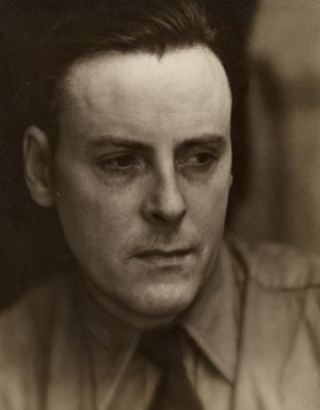Born 1895, Fargo, North Dakota
Died 1942, New York City
Sculptor John Flannagan worked at the crossroads of modern art and forms then considered “primitive,” fusing Celtic, Mesoamerican, and medieval sources. As a young man, he studied painting at the Minneapolis Institute of Art before becoming a farmhand to the modernist Arthur B. Davies in New York State in the early 1920s. Flannagan had started woodcarving as a boy and later turned to his preferred medium of stone. Unable to buy raw materials, he began to harvest fieldstones and employed the direct carving method to shape the stones intuitively. For the most part, he used no preliminary models but coaxed the finished work out of the natural form. As Flannagan described this quasi-mystical process: “There exists an image within every rock. The creative act of realization merely frees it.”[1]
Beyond their economic advantages, fieldstones appealed to Flannagan for their potential to communicate more immediately than a medium like bronze, which typically required maquettes, a foundry, and a production team. For Flannagan and his contemporaries working in similar directions—including Henry Bannarn, William Edmondson, and William Zorach—the solitary act of direct carving harked back to the anonymity of the medieval craftsman. Animal subjects featured prominently in his repertoire, since the “humbler life forms” avoided what he considered the “narcissistic” human figure. Balancing naturalism with abstraction, Flannagan often used the animal world to make larger symbolic statements.
In Dragon, a reptilian creature rises like a totem, baring its teeth and clutching its claws to its chest. The rough granite gives this monster a primordial quality, as if it had weathered the ravages of time, a textured corollary to the Celtic allusions that engrossed Flannagan when he lived in Ireland in the early 1930s. In Jonah and the Whale: Rebirth Motif, a bluestone sculpture on a wood base, Flannagan’s light incision retains the rock’s original character, nesting Jonah’s fetal form within the whale that saves him from the storm by swallowing him.
Flannagan achieved widespread recognition through many one-man and group exhibitions in New York in the 1920s and 1930s, including at the Whitney Studio Club, before taking his own life at age forty-six.
Kara Fiedorek
Miller, Dorothy, ed. The Sculpture of John B. Flannagan. New York: The Museum of Modern Art, 1942.
Pach, Walter. “John B. Flannagan: American Sculptor.” The Kenyon Review (Summer 1943), 384–393.
[1] John B. Flannagan, “The Image in the Rock,” in Dorothy Miller, ed., The Sculpture of John B. Flannagan (New York: The Museum of Modern Art, 1942), 7.
